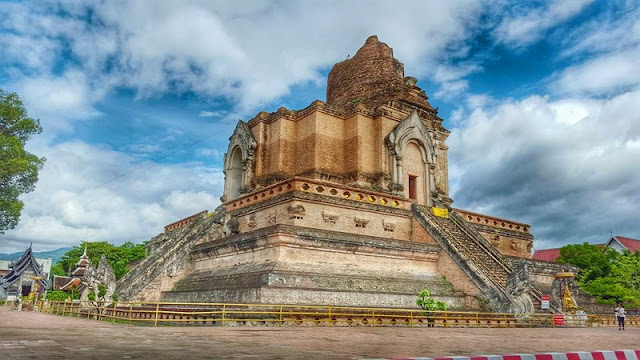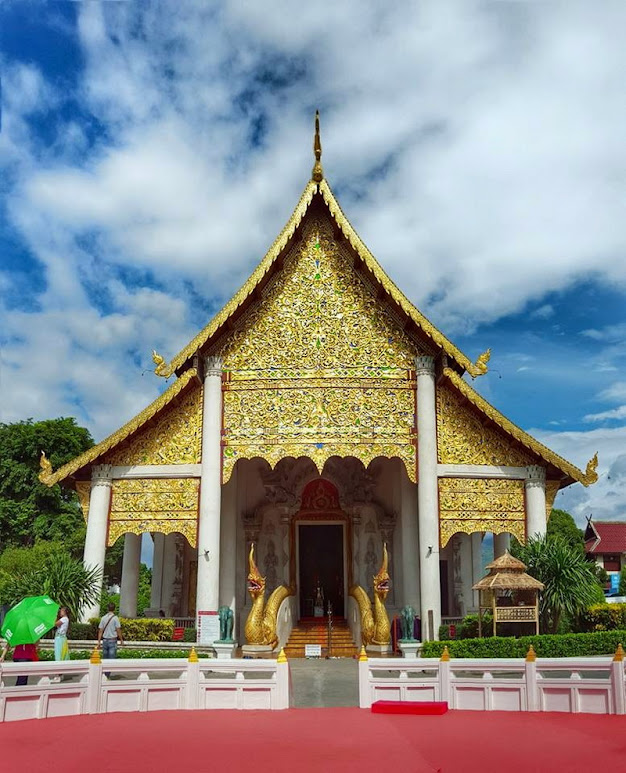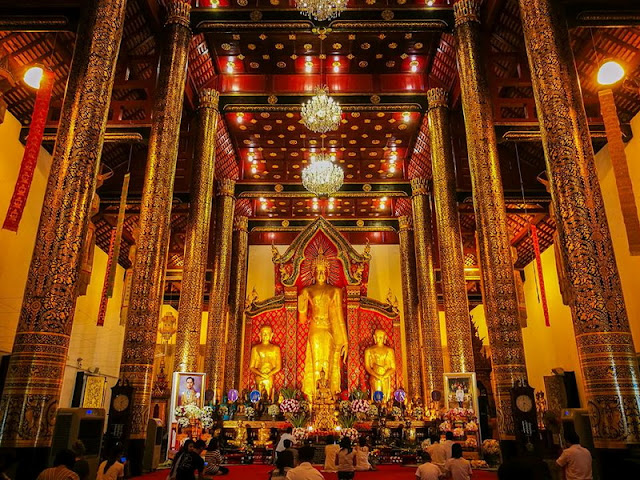The
Jewel of Chiang Mai : Wat Chedi Luang
Exploring the Beauty and Significance of Wat Chedi Luang
Wat
Chedi Luang, also known as the Temple of the Large Stupa, is a historic
Buddhist temple located in the heart of Chiang Mai, Thailand. With a rich and
fascinating history dating back to the 14th century, the temple has served as a
symbol of the city's cultural heritage and a place of worship for centuries.
From its construction as a symbol of power and wealth, to its destruction and
eventual restoration, Wat Chedi Luang continues to captivate visitors with its
stunning architecture, beautiful Buddha images, and rich cultural significance.
History
of Wat Chedi Luang
Wat
Chedi Luang has a rich and fascinating history that spans over 600 years. The
construction of the temple began in 1391 on the orders of King Saen Muang Ma,
who wanted to build a grand structure to house the ashes of his father. Despite
having started the construction, the king passed away, and his widow took it
upon herself to continue the work in her late husband's name. It wasn't until
the reign of King Tilokaraj in the mid-15th century that Wat Chedi Luang was
finally completed.
For
nearly a century, the temple was home to Thailand's most sacred object, the
Emerald Buddha. However, it was later moved to Wat Phra Kaew in Bangkok after
the temple was partially destroyed, either due to an earthquake in 1545 or
cannon fire during the Burmese conflict in 1775. The temple's current ruined
state has not been restored, and the Japanese government and UNESCO's attempt
to reconstruct the temple in the 1990s failed to take off. To this day, Wat
Chedi Luang remains one of the most popular tourist destinations in Chiang Mai,
attracting visitors with its rich history and cultural significance.
The
Chedi Ruins
One
of the most popular features of Wat Chedi Luang is the huge chedi (pagoda). The
pagoda was partially destroyed, but its ruins and the history surrounding it
are still a major draw for visitors. The construction of the chedi began in
1391, on instruction from King Saen Muang Ma, who wanted an ornate chedi to
house the ashes of his father. It took nearly a century to construct and was
eventually finished in 1475, under the reign of King Tilokarat. The chedi
originally stood 85 meters tall and 44 meters wide, but suffered damage from
either an earthquake in 1545 or cannon fire during the Burmese conflict in
1775, losing at least 30 meters of its height.
The
Viharns
Visitors
to Wat Chedi Luang can also admire two viharns (sermon halls). The largest of
these is a beautifully decorated structure with a three-tiered roof and gold
ornate decorations, built in 1928. The entrance is guarded by the Buddha statue
Phra Chao Attarot, which was made at the same time as the original Wat Chedi
Luang. The smaller viharn is also worth a visit, with its elegant style,
intricate wood carvings, and two nagas guarding the entrance.
The
City Pillar and Dipterocarp Trees
A
small building on the temple grounds houses the Sao Inthakin (Pillar of Lord
Indra), also known as the City Pillar. The pillar is said to have been brought
down to earth by spirits to protect the residents of Chiang Mai and was first
built in 1296 before being moved to Wat Chedi Luang in 1800. Next to the
building are three huge Dipterocarp trees, which are also said to help protect
the city and whose falling is said to foretell a catastrophe for Chiang Mai.
How
to Get to Wat Chedi Luang
Wat
Chedi Luang is located in the heart of Chiang Mai, and there are several ways
to get there. If you're planning a trip to Chiang Mai, you can choose from a
private tour with a knowledgeable guide or join a budget tour with a group. Our
tour agency in Chiang Mai is dedicated to helping you plan your trip, and we
will assist you in selecting destinations, accommodation, and activities that
best suit your requirements. Whether you're interested in learning about the
rich history of Wat Chedi Luang and the Lanna culture or simply want to enjoy
the stunning architecture and beautiful Buddha images, we have the perfect tour
for you. So come and join us for an in-depth travel experience in Chiang Mai!









No comments:
Post a Comment